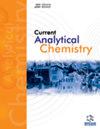Chromatography Chronicles: Unveiling the Power of Reversed-phase High-performance Thin Layer Chromatography in Pharmaceutical Analysis
IF 1.7
4区 化学
Q3 CHEMISTRY, ANALYTICAL
引用次数: 0
Abstract
Pharmaceutical analysis is critical in ensuring the quality and safety of drug substances and formulations. High-performance thin-layer Chromatography (HPTLC) has emerged as a powerful analytical technique in the pharmaceutical industry due to its numerous advantages, including high separation efficiency, cost-effectiveness, and ease of sample preparation. One of its variants, Reversed-Phase High-Performance Thin-Layer Chromatography (RP-HPTLC), has gained immense popularity for analyzing nonpolar and slightly polar compounds, including drugs and their metabolites. This review paper draws attention to history and the recent developments in RP-HPTLC for pharmaceutical analysis. It highlights the advantages and limitations of RP-HPTLC, discussing its applications in drug analysis, impurity determination, stability-indicating assays, and more. In this study, recent advances in RP-HPTLC instrumentation and techniques were reviewed, including hyphenated methods, such as Reversed-Phase High-Performance Thin-Layer Chromatography coupled with Mass Spectrometry and Reversed-Phase High-Performance Thin-Layer Chromatography coupled with Nuclear Magnetic Resonance. Through this comprehensive analysis, the authors aim to underscore the potential of RP-HPTLC as a reliable and efficient analytical technique in the pharmaceutical industry and shed light on future trends in this field.色谱编年史:揭示反相高效薄层色谱法在药物分析中的强大功能
药物分析对于确保药物和制剂的质量与安全至关重要。高效薄层色谱法(HPTLC)具有分离效率高、成本效益高、样品制备简便等众多优点,已成为制药行业一种强大的分析技术。反相高效薄层色谱(RP-HPTLC)是其变体之一,在分析非极性和轻微极性化合物(包括药物及其代谢物)方面大受欢迎。本综述介绍了 RP-HPTLC 在药物分析方面的历史和最新发展。它强调了 RP-HPTLC 的优势和局限性,讨论了它在药物分析、杂质测定、稳定性指示测定等方面的应用。本研究回顾了 RP-HPTLC 仪器和技术的最新进展,包括连用方法,如反相高效薄层色谱-质谱联用法和反相高效薄层色谱-核磁共振联用法。通过这一全面分析,作者旨在强调 RP-HPTLC 作为制药行业可靠、高效分析技术的潜力,并阐明该领域的未来趋势。
本文章由计算机程序翻译,如有差异,请以英文原文为准。
求助全文
约1分钟内获得全文
求助全文
来源期刊

Current Analytical Chemistry
化学-分析化学
CiteScore
4.10
自引率
0.00%
发文量
90
审稿时长
9 months
期刊介绍:
Current Analytical Chemistry publishes full-length/mini reviews and original research articles on the most recent advances in analytical chemistry. All aspects of the field are represented, including analytical methodology, techniques, and instrumentation in both fundamental and applied research topics of interest to the broad readership of the journal. Current Analytical Chemistry strives to serve as an authoritative source of information in analytical chemistry and in related applications such as biochemical analysis, pharmaceutical research, quantitative biological imaging, novel sensors, and nanotechnology.
 求助内容:
求助内容: 应助结果提醒方式:
应助结果提醒方式:


